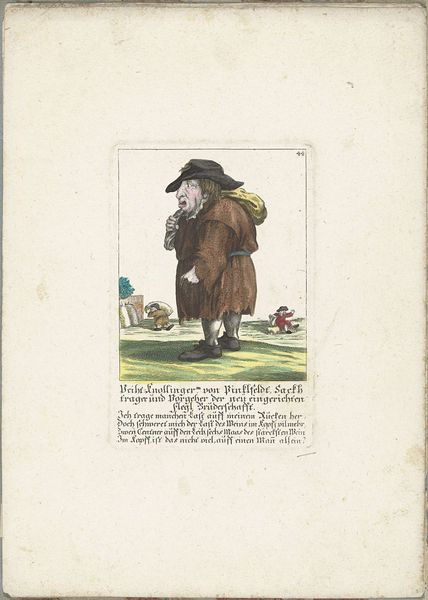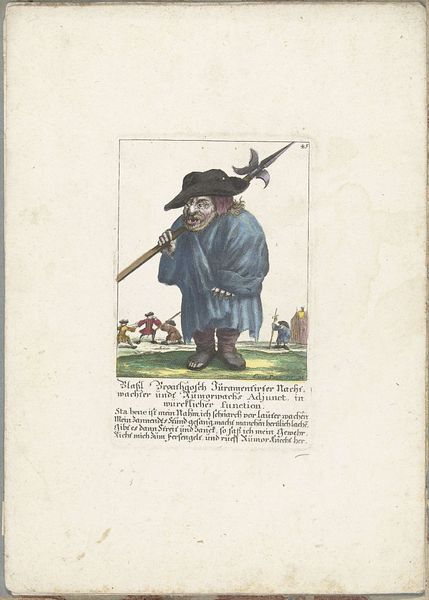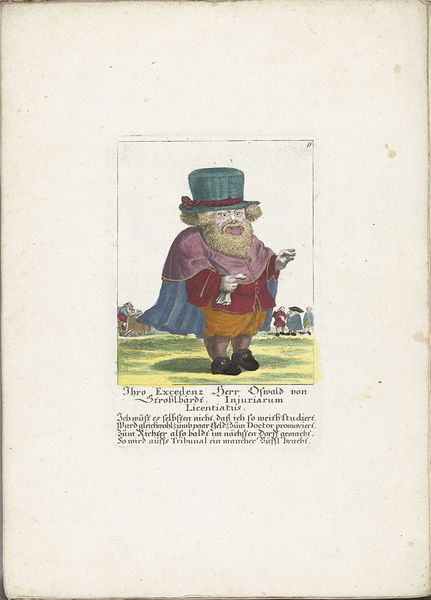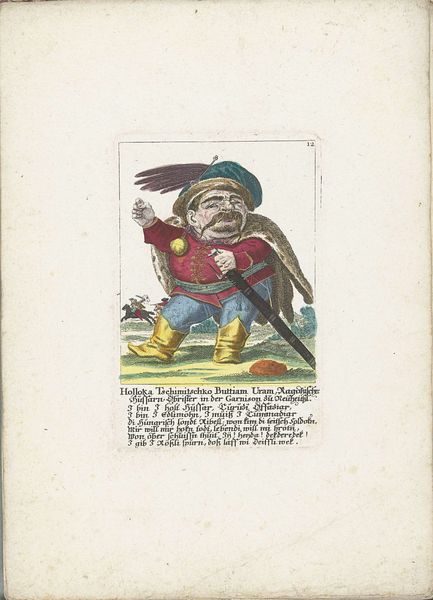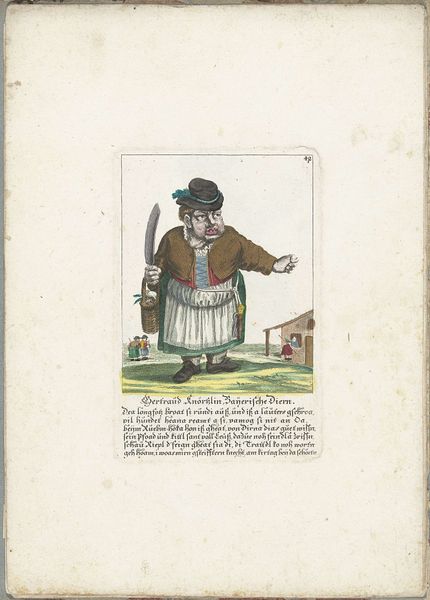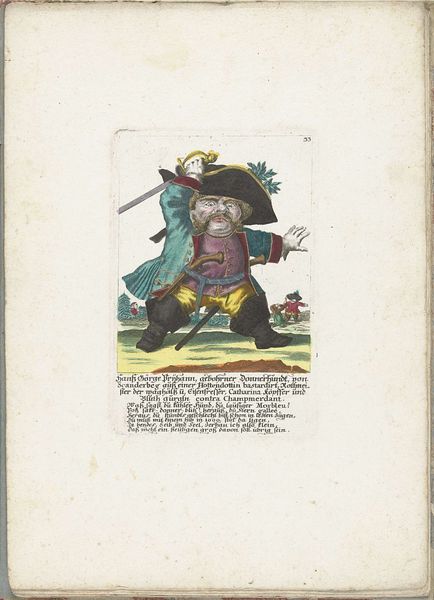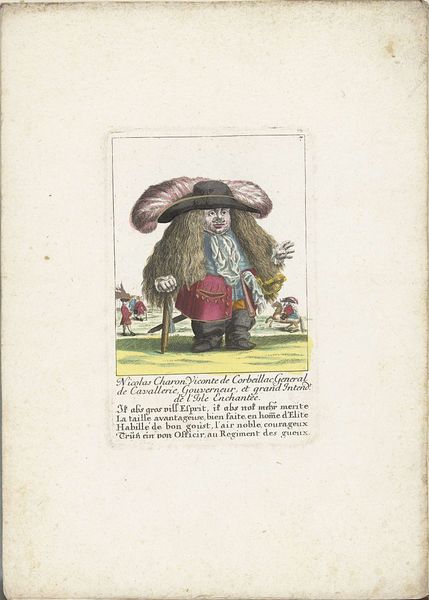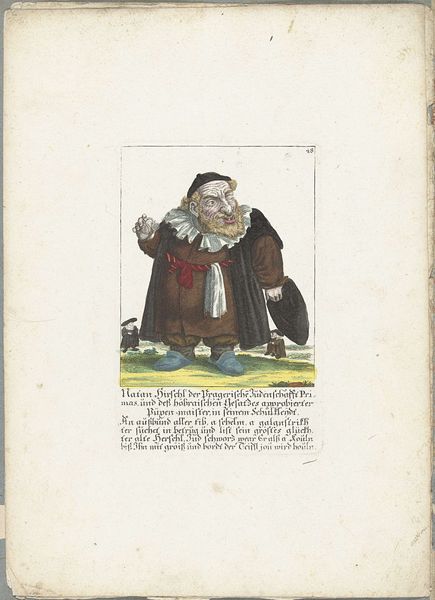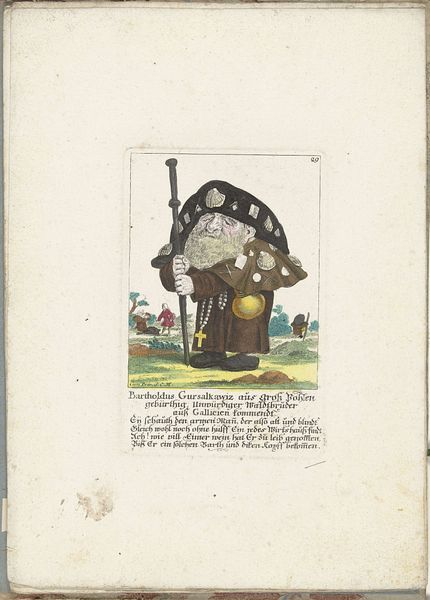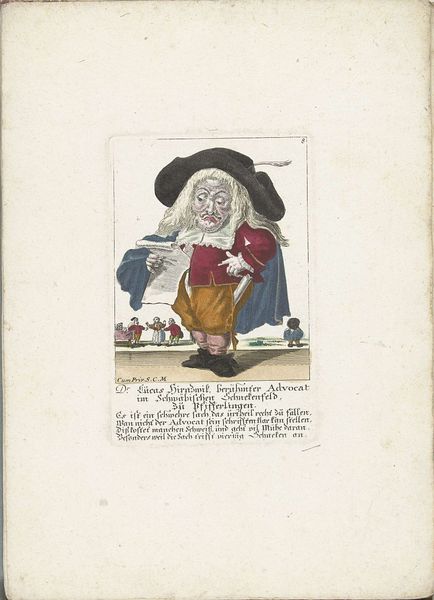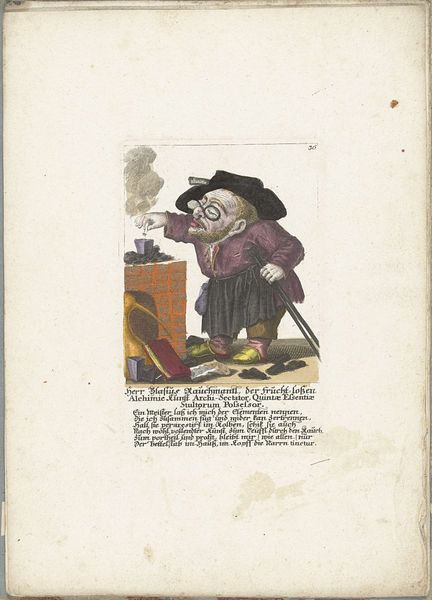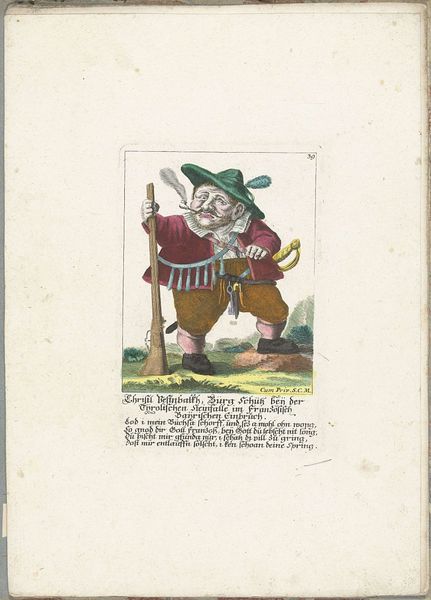
De Spaanse dwerg Don Miguel Zorrero Tuerto, ca. 1710 1705 - 1715
0:00
0:00
martinengelbrecht
Rijksmuseum
graphic-art, print, paper, ink, engraving
#
portrait
#
graphic-art
#
baroque
# print
#
caricature
#
paper
#
ink
#
watercolour illustration
#
engraving
#
watercolor
Dimensions: height 170 mm, width 110 mm, height 320 mm, width 225 mm
Copyright: Rijks Museum: Open Domain
Curator: This engraving, etched in ink on paper around 1710, presents us with "De Spaanse dwerg Don Miguel Zorrero Tuerto," or "The Spanish dwarf Don Miguel Zorrero Tuerto" attributed to Martin Engelbrecht. The artwork is currently held in the collection of the Rijksmuseum. Editor: My first impression is how powerfully this small figure commands attention, almost like a fantastical character pulled straight from folklore. The overt and slightly grotesque exaggeration makes it more fascinating, doesn’t it? Curator: Absolutely. We need to acknowledge the historical context: portraying people with disabilities, specifically dwarfism, as figures of ridicule or entertainment was sadly common. Engelbrecht’s rendering invites us to confront this legacy. Is this simply Baroque caricature or something more insidious? Editor: It’s compelling to note the symbols and details embedded here, especially the character’s exaggerated form combined with elements suggesting status. What might those oversized ribbons on his shoes, the precise cut of his coat, be saying, positioned against what looks like a conquistador background? It seems almost performative. Curator: I read the background, depicting riders who seem indifferent to him, as key. Is this a comment on the alienation felt by marginalized people, even within positions of supposed power? Or are the artist and his patron critiquing Spanish colonial aspirations via this ridiculous figure? Editor: The details offer an answer; think of that outstretched finger—simultaneously accusatory and authoritative— juxtaposed against the dismissive riders in the background. It points to that push-and-pull tension. What story is contained within his eye—or the empty socket itself? There's so much cultural memory loaded into a figure like this. Curator: Right. What appears, on the surface, to be just an oddity, unfolds as a reflection of societal power dynamics and prejudices. This piece, for me, highlights the intersection of disability studies and postcolonial critique. It prompts questions about who is seen, who is heard, and who is relegated to the margins of history. Editor: This small etching holds up a funhouse mirror, distorting perceived power into something quite vulnerable. Paying attention to the artist's treatment of these old themes unlocks some enduring psychological insights. Curator: Yes, viewing it with an eye to cultural representation, what initially appears as historical quirk instead prompts relevant questions regarding today's societal structures.
Comments
No comments
Be the first to comment and join the conversation on the ultimate creative platform.
